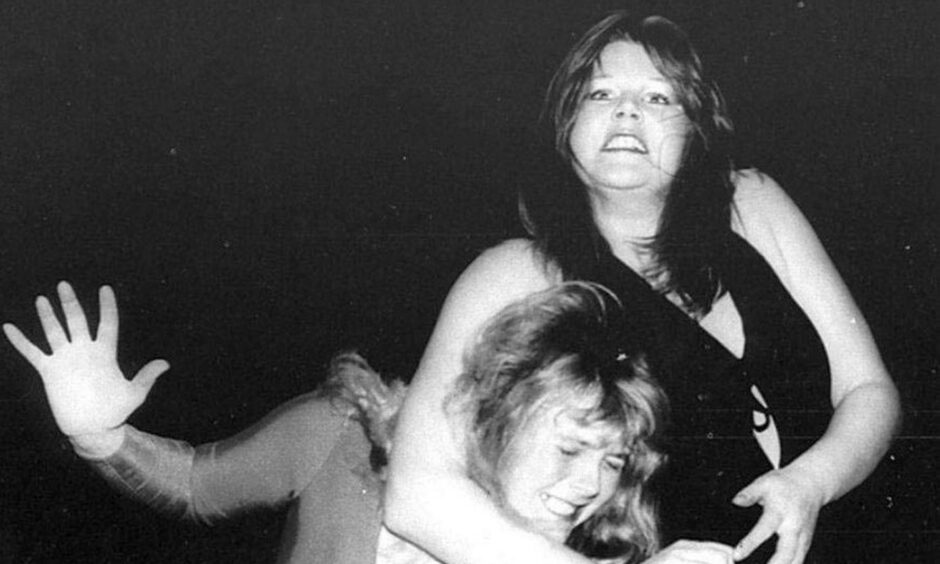
Flame-haired Rusty Blair went from showjumper to show-stopper and became a world champion in the wrestling ring during the 1970s and 1980s.
The Blairgowrie lass was as tough as they came and frequently received top billing on shows which featured male stars from the World of Sport era such as Kendo Nagasaki.
She broke down barriers in the male-dominated sport and helped paved the way for the likes of Becky Lynch, Charlotte Flair and Ronda Rousey to headline WrestleMania.
Rusty has now become the first female wrestler to be awarded the prestigious annual honour of induction into The Professional Wrestling Hall of Fame for Scotland.
In previous years, inductions have included industry icons such as Dundee’s “Houdini of the Mat” George Kidd (the first inductee, in 2015) and Dunfermline’s Ian Campbell.
The Hall of Fame was established by professional wrestling historian Bradley Craig to honour the greatest contributors to the sport in Scotland and preserve its rich cultural heritage.
Who was Rusty Blair?
Rusty Blair (real name Carole Taylor) was born on December 20 1957.
She was the daughter of a former lightweight boxer and started her career as a showjumper and had a couple of horses before entering the world of wrestling.
Carole reached ‘Class-A’ showjumper status.
Then her life changed direction in 1976.
She was discovered by Welsh grappler and promoter Orig Williams during a chance meeting in Perth and asked if she wanted to learn the basics of pro wrestling.
She moved to Rhyl, north Wales, in pursuit of this dream, where she was trained alongside Gloria Young, who competed under the name Cherokee Princess.
Her name was given to her by Orig due to the rusty colour of her fiery red hair, and the last name being a reference to Blairgowrie, which was Carole’s hometown.
It was important for her to reference her hometown while she was travelling the world.
My first pro match was actually with a man, Joe Critchley, at the Villa Marina on the Isle of Man.”
Rusty Blair
“It was Orig’s wife that thought of it and I loved it” said Rusty.
“It sort of gives you a new personality, separate from yourself.
“There weren’t many girls on the circuit.
“We were trained by men and had to work like men. I was lucky I trained with the best.
“Orig Williams brought me into the business, and he expected us to be the best.
“Cherokee Princess and I did a lot of our training with Mighty Chang, Eric Taylor and Orig himself.
“My first pro match was actually with a man, Joe Critchley, at the Villa Marina on the Isle of Man.”
Famous for her forearm smashes
Rusty competed in some of the UK’s first mixed tag team matches in 1977, which pitted teams of men and women against each other in partnered competition.
She worked primarily for the British Wrestling Federation in her early years, which did international tours across Africa and Asia, as well as for All-Star Wrestling based in Merseyside.
The only Scottish female wrestler of her era, she was famed for her forearm smashes and body slams.
You knew you were in for a real battle.
Rusty and Cherokee Princess were the first women to wrestle in Dubai.
In 1979 she emerged victorious during a summer tournament to win the Women’s World Championship, from a pool of 24 competitors.
In the finals, she defeated Chicago-based Princess Jasmine in Lagos, Nigeria.
She finished Jasmine off with a punch in the back to secure the title in front of a capacity crowd of 10,000 fans in Lagos, Nigeria.
She defended her title for years against the top female talent in the circuit, including Viv Martell, Carla Sanchez, Tina Star and Paula Valdez, and many others, as female wrestling became hugely prominent in the 1980s British independent circuit.
She headlined a major champion versus champion show on February 15 1980 at Liverpool Stadium.
Blair was the world women’s titlist and faced Mitzi Mueller, who was the reigning British and European women’s champion.
Blair defeated Mueller to unify the three titles, ending Mueller’s 11-year grip on the British title and her seven-year hold of the European strap.
She was one of the key figures who successfully pushed for legalisation of female wrestling in various counties across England including Greater London.
Main event at the Royal Albert Hall
As the defending triple champion, Blair was prominently featured on Reslo, which was a pro wrestling show featured on Welsh language channel S4C.
She bowed out at the top of her game.
Teaming with Mitzi Mueller in her retirement bout against ‘The ‘Bovver Birds’ duo of Klondyke Kate and Nicky Monroe, she was part of the first-ever all-female main event at The Royal Albert Hall on April 24 1987.
Their main event led to a huge cultural change within British wrestling.
Because of the influence of a select few female wrestlers like Rusty, not only was it possible for women to wrestle on a major show, but they could star in the main event on the circuit’s grandest stage.
Rusty concluded her wrestling career as a full-time performer at the end of 1988, to return to a career in show jumping.
Bradley Craig said one of the key functions of The Professional Wrestling Hall of Fame for Scotland is to “spotlight the efforts of the figures who forever changed the art form within the genre, and those who altered the historical course of the industry”.
He said: “As the top star during an era in which women’s wrestling became prominent, ‘The Flower of Scotland’ Rusty Blair was a hugely influential cultural figure, who helped break down barriers and made the sport more accessible for other aspiring females to enter the industry within these shores.
“As an enduring world titlist, Rusty Blair competed in the first-ever women’s wrestling matches in Malta, in the United Arab Emirates, among countless other countries across the world, so she is a major figure in the development of the sport.
“Hopefully her induction today will introduce her accomplishments to a new generation and remind older fans of her lasting influence.”
Paving the way for WWE heroes
Today, there are multiple female talents from Scotland who compete in WWE and other major pro wrestling promotions.
“While names like Piper Niven, Nikki Cross and Kay Lee Ray are forging their own legacy, it was the efforts of a handful of trailblazing talents from previous generations that made this possible,” said Bradley.
“As the touring world champion, who starred in the first female bouts in many countries across Europe, Africa and Asia, there is little doubt that Rusty Blair helped change the wrestling business and made it more accessible for women who wanted to enter the sport.
“For years, female wrestlers were dismissed by many as sideshow attractions and not taken seriously, but due to their hard work, this led to greater equality in the business and changed the audience’s perception of what a pro wrestler could be.
“There is a common misconception that the WrestleMania 35 bout featuring Becky Lynch, Charlotte Flair and Ronda Rousey in 2019 was the first major show to feature an all-female main event.
“However, Rusty Blair and Mitzi Mueller had been headlining multiple international shows since the 1970s, which illustrated their importance to the development and acceptance of women’s wrestling in various continents.
“In the 1980s, promotions in Japan also increasingly invested in Joshi (the Japanese term for women’s pro wrestling).
“Mainstream promotions in the United States were generations behind the progressive efforts across the Pacific and Atlantic.”
Rusty now resides in North Wales but retains a great affection for Blairgowrie.
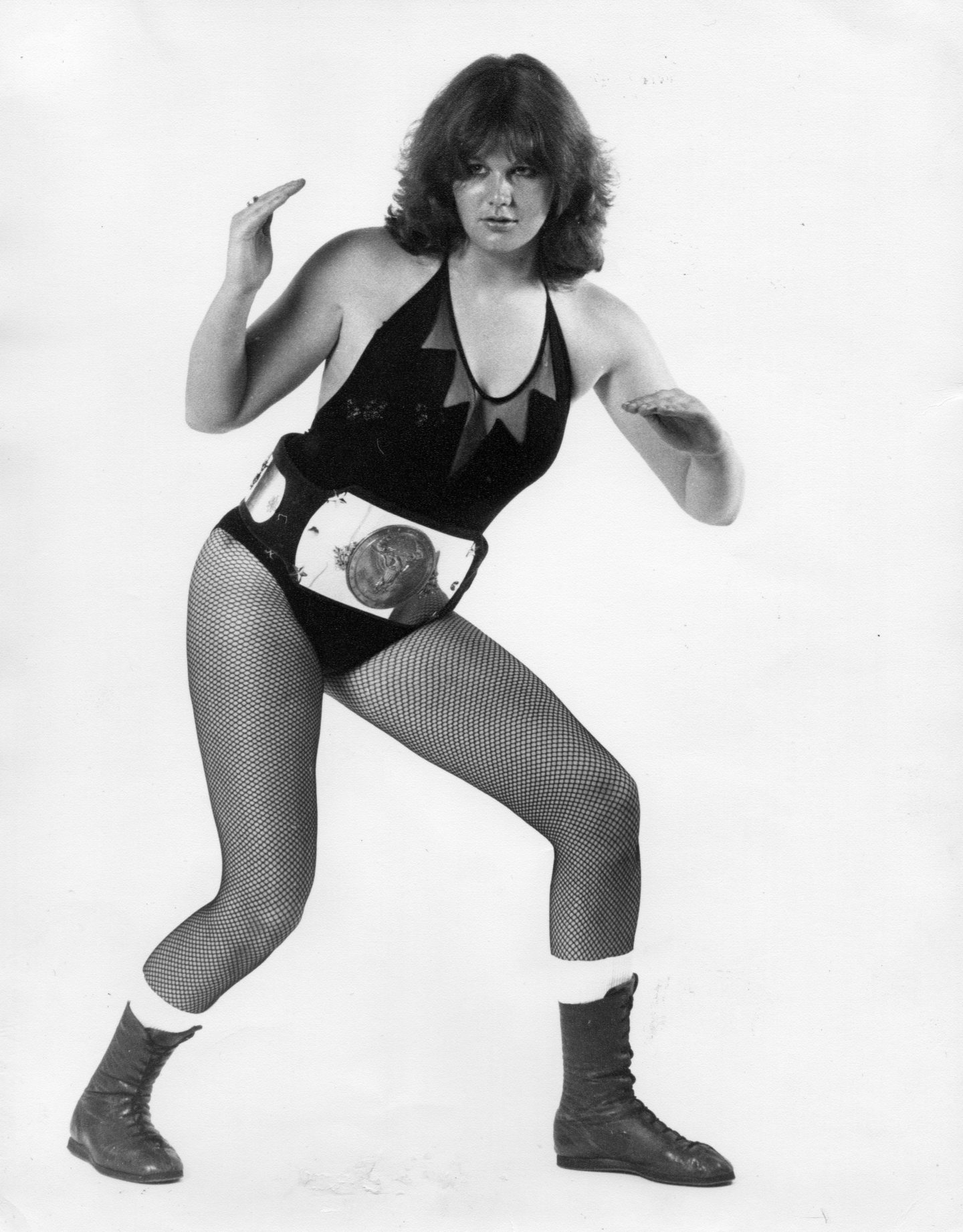
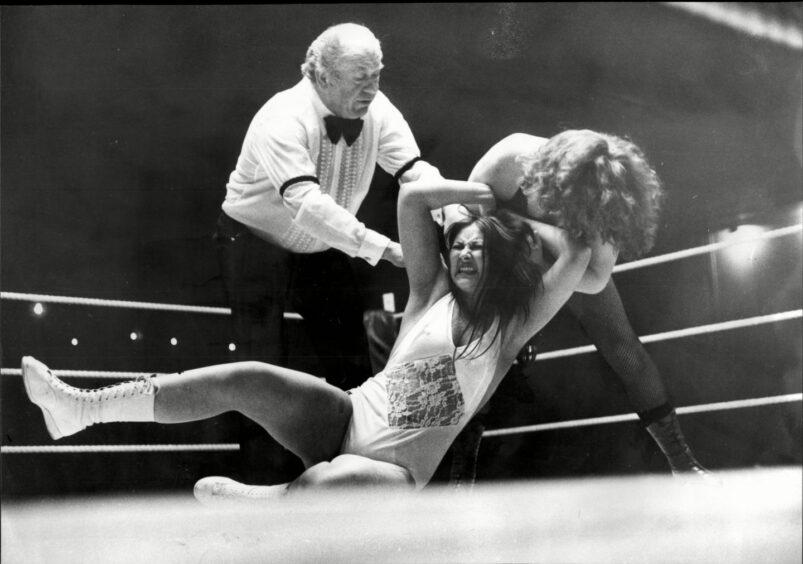
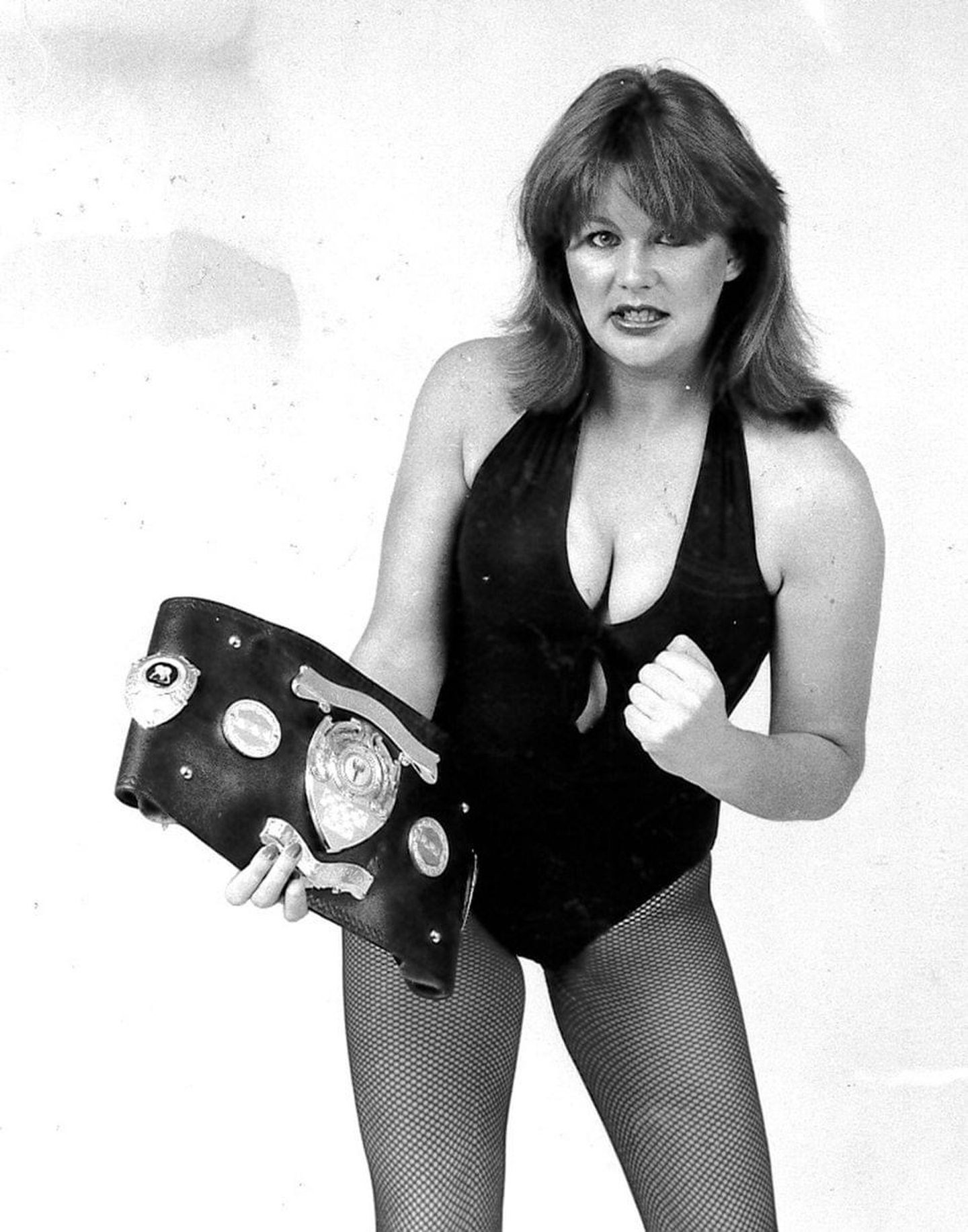
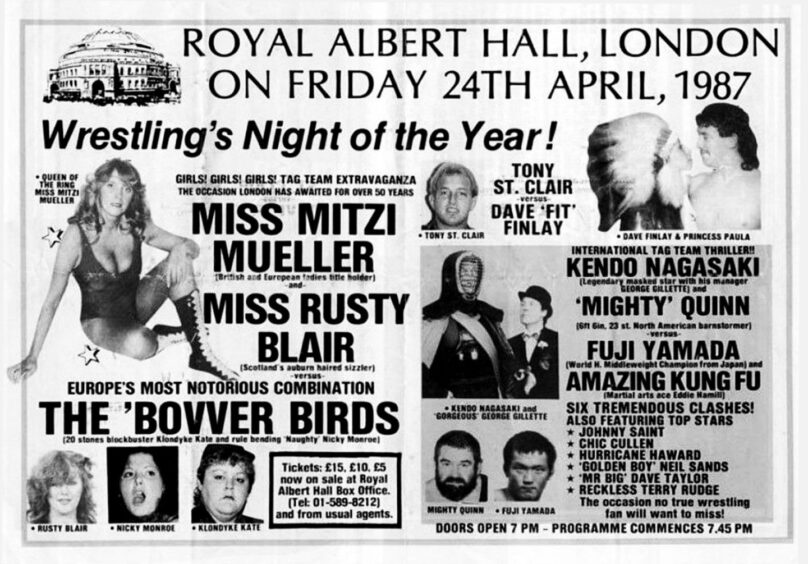
Conversation